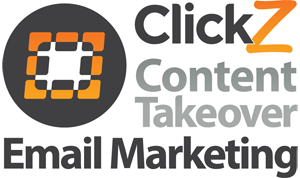The Gmail Promotions Tab: To Game or Not to Game
The Gmail Promotions tab is a sore spot with many email marketers since it isolates branded content from a user's primary inbox. Is there any way out and should marketers even try?
The Gmail Promotions tab is a sore spot with many email marketers since it isolates branded content from a user's primary inbox. Is there any way out and should marketers even try?
 Since the launch of Gmail Tabs in 2013, email marketers have scrambled to get out of the Promotions tab and back into the inbox, but is gaming Gmail even really worth it?
Since the launch of Gmail Tabs in 2013, email marketers have scrambled to get out of the Promotions tab and back into the inbox, but is gaming Gmail even really worth it?
The launch of Tabs sent email marketers into a frenzy, but that hysteria soon dwindled to a sort of begrudging acceptance, according to Jeanne Jennings, managing director of digital marketing for Digital Prism Advisors. “When the Promotions tab was launched, there was a big outcry from the email marketing industry,” Jennings says. “People said they would be put in this ghetto that was away from the primary inbox. My take on the Promotions tab was a little bit different. Aside from that initial crazy outcry, you don’t really hear that much about the Promotions tab anymore.”
But according to Jennings, the Promotions tab isn’t such a bad place to be. Since Gmail users primarily use the preset mail app on smartphones, promotional offers generally show up alongside primary emails on mobile. It’s only if users download a separate Gmail app that they can sort mail into folders. So all marketers have to do is catch a consumer’s eye on mobile to lead them into that Promotions tab on desktop. “If someone has a relationship with your brand, and they want to hear from you, they’re going to learn that your stuff is under the Promotions tab, and they’re going to go there for it,” Jennings says.
Once users are in the Promotions tab, marketers have to step up their performance to actually get clicks. According to Jennings, many email marketers are underutilizing “snippets,” or the extra line of text that comes after the subject line. It can be difficult to test which part of the email text will become the snippet. For some, it’s the first line of text in the email; for others, it’s an alt tag in images at the top left corner.
According to Jennings, finding and utilizing the snippet can result in an exponential increase in views for emails sunk in the Promotions tab. “I tested with a client, and the subject line [of the email] was ‘Meeting Request,'” Jennings says. “The snippet was ‘Learn how to take the pain out of PR and we’ll give you a $50 gift card.’ The snippet was super successful. We had two different versions, and really the only difference was this copy at the top, which became the snippet. We saw a 220 percent lift in leads. The snippet is really powerful copy and it’s surprising how many people still don’t leverage it.”
Jennings believes that creating compelling content and making the most of features like snippets is the best way to draw attention to promotions in Gmail. “People have talked about the idea of trying to game the system to get out of the Promotions tab,” Jennings says. “Google’s response is don’t even try. It is what it is. As marketers, we need to accept it. Even if you manage to game it, Google’s going to figure out that you’re gaming it, and then you’re going to end up back in the Promotions tab, so it’s kind of an uphill battle.”
However, industry expert Sundeep Kapur doesn’t think it’s realistic to expect consumers to look in their Promotions tabs. “When Gmail says they’ve got things sorted out in the Promotions tab, it’s not beneficial to brands in the long term because it takes the consumer time to go there,” Kapur says. “Unless it’s Sunday and you’re sitting there cutting coupons, consumers aren’t going to look. So you’ve got to figure out a way to get some of your messages where you’re communicating with the consumer you seek.”
According to Kapur, it’s not “gaming” to start a conversation with consumers that leads out of Promotions and into Primary. First, marketers should ask subscribers a question and ask subscribers to hit “Reply” to answer. When they reply, marketers should respond with a link that takes subscribers to a sign-up page for a contest or promotion. That way, Gmail sees genuine interaction between users and email service providers, sometimes enough to get out of Promotions.
But no matter whether email marketers accept their place in the Promotions tab or try to wiggle out, Kapur can agree that success in such a competitive space is primarily about attention. “You want to make sure that at the very minimum you get an open,” Kapur says. “The second-best thing is to get a click. The best thing to do is get that response and a dialogue going with the consumer.”